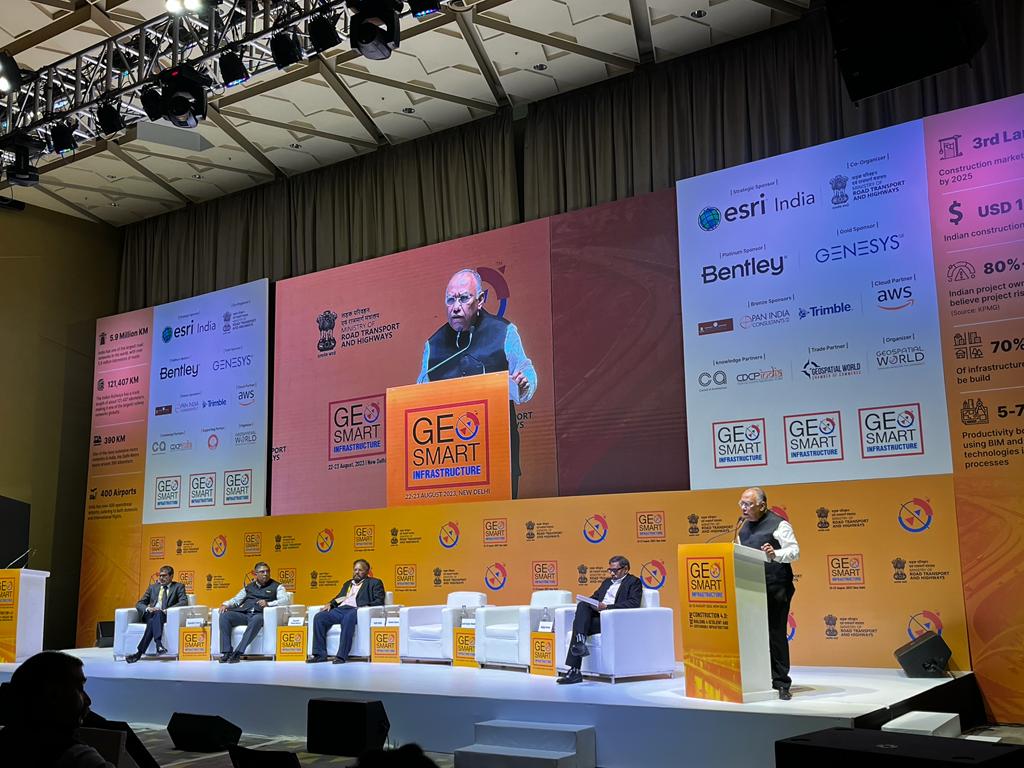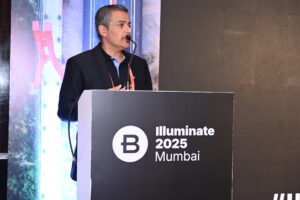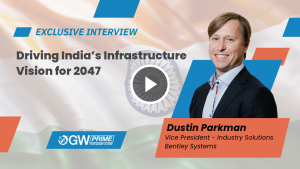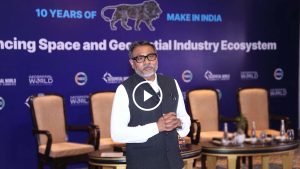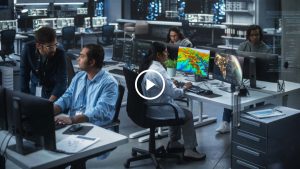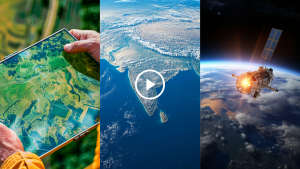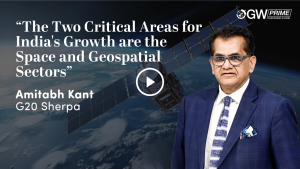GeoSmart Infra 2023 deliberates on the criticality of infra for national development and the indispensable role of technology integration
GeoSmart Infrastructure 2023 opened on 22nd August 2023 at Taj Vivanta, Dwarka, involving participants from the government, industry, and academia.
“Infrastructure is critical for India’s ambition to become the third largest economy by 2030 and first by 2047 at the centenary of the country’s independence”, said Sanjay Kumar, CEO, Geospatial World, in the inaugural address.
Amit Ghosh, Additional Secretary, Ministry of Road Transport and Highways delivered the welcome address. He talked about how India becoming one of the largest economies in the world, with the Infrastructure sector expected to hit $5 trillion by 2025.
“Infrastructure is the foundation for a country’s development. Every Rupee spent on infrastructure has a multiplier effect. There has been an integrated focus under the PM Gatishakti, addressing the needs of various ministries and departments in a systematic manner. The national master plan is a path-breaking initiative to boost connectivity”.
“With the PM Gatishakti National Master plan, the aim is to be efficient with a reliable and sustainable infrastructure development especially in the Transport as the emission is the highest. In Digital Twin, there are no clear-cut world leaders, so it’s a great opportunity for India to take the lead”, he adds.
Kaushik Chakraborty, Senior Vice President, Bentley Systems talked about how Digital Twin is all about keeping the perpetuity of the asset. PM Gatishakti National Master Plan is the digital twin and all departments and state governments need to work together seamlessly. He said. “Digital Twin is all about aggregating all stakeholders to make accurate, near real-time decisions. This is what PM Gatishakti is all about.”
Sajid Malik, CEO, Genesys said “Digital Twin is a life-saving solution, in many cases such as railway corridor maintenance and preventing accidents. The utility of accurate data delivers immense value to citizens and is helpful in tracking ESG and sustainability measures as well.
He talked about how Digital Twin is a very nascent technology that’s new to the world. Mandating the use of digital technologies is necessary as it will help a lot in saving time and improving efficiency and quality. This requires adoption of these digital technologies and how it is seen increasing in the Indian Diaspora.
GIS & BIM for a Built Environment
BIM is the digital version of a physical object. BIM models can do performance modelling over the full lifecycle of a building. Describing the building in the form of algorithms and letting the computer actually generate the BIM model is the next level of technology evolution. GIS is seen as a key enabling block of the BIM-for-infrastructure possible.
“GIS and BIM come together to give unique value. GIS provides the location component which is a crucial information. Correlation between BIM models and GIS, used in geodesign, helps ensure a collaborative mechanism with high efficiency and user functionality”, said Agendra Kumar, Managing Director, ESRI India
Anurag Jain, Secretary, MoRTH, “Sustainability and resilience of infrastructure is very important. Technology integration is crucial for multiple reasons such as mitigating future environmental impacts.
PM Gatishakti is a revolution in the government sector. We are deliberating how to involve the private sector without compromising Defence and equity. Geospatial infrastructure helps a lot in social sectors as well, such as establishing women and child care facilities, educational facilities, and healthcare services.
Sustainability and Resilience of Infrastructure is important. Opening up all the geospatial policies, space policies have been integral.
Importance of Detailed Project Report
“India is the fastest growing major economy today. By 2047, we envision becoming a developed nation, and infrastructure is a key growth driver in it. We need to plan infra development such that it brings more efficiency and cost-effectiveness in the logistics ecosystem. Manufacturing is another growth driver along with Infrastructure. Planning is important for ease of business as well as ease of living. Schools and Anganwadi need to be better connected”, says Sumita Dawra, Special Secretary (Logistics), DPIIT.
“Geospatial enables precise route mapping, monitoring, optimal resource planning, and reducing carbon footprints. Synchronization of efforts among the ministries for a truly multi-modal platform, is the revolutionary approach of PM Gatishakti”, said
“We have the vision to Make in India for the World via PLIs so that we have domestic manufacturing champions. In order to attract global supply chains and value chains that bring development, employment and other key growth areas, infrastructure is pivotal”.
The plan envisions digital mapping and GIS tech to bring about efficiency. Satellite Imagery also plays a very critical role. We are able to bring about predictive planning. 39 states have on boarded with customized tools for every ministry. There are no last gap connectivity problems under the PM Gatishakti plan and it brings about multimodal connectivity.
Nitin Gadkari, Union Minister, Ministry of Roads, Transport and Highways (MoRTH) addressed the audience virtually. He said, “Infrastructure is regarded as the backbone of India’s ambition of a $5billion economy.”
The Hon’ble Minister also released a report “Digital Twin Strategy for Indian Infrastructure”, which has been prepared under the aegis of the Non-Executive Think Tank on Digital Twin Strategy for Indian Infrastructure, constituted by Geospatial World.
He said, “The National Digital Twin strategy will create a platform for sharing data and insight into all infrastructure sectors. I believe a knowledge hub should be created to make all stakeholders understand the value that digital twins will create.
“We need to reduce the cost of construction without compromising with the quality, like how can we procure the alternative material for construction. In the two upcoming projects, Delhi-Bombay highway and Ahmedabad-Dholera expressway, we are using 30 lakh ton of waste material through a simple methodology of segregating the garbage and using them. This is our contribution to a better environment practice and in addition we can reduce the cost of construction.”


